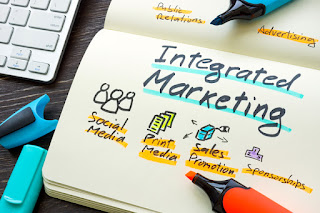Productivity is a critical factor in being successful.
Although it would be nice to have our goals reached by relaxing at home all day, there is a rewarding feeling of achievement knowing that effort was put in for a great outcome.
This is easier said than done; being productive daily takes self-control and discipline. There are so many factors that go into running a business. Incorporating organization into your day and staying productive can assist and guide you as a busy entrepreneur. Here are a few ways you can do that!
10 Tips To Boost Productivity
1. Prioritize.
Looking over a long to-do list can be stressful.
Instead of becoming overwhelmed, try organizing your to-do list into priorities. Determine which task is the most crucial to complete and stick with that one. Taking it one step at a time changes your perspective and helps you take a realistic approach to overcoming that stubborn list!
2. Communicate.
Communication is essential in all areas of life- especially in the workplace.
Many problems arise from a lack of communication, and this can waste time and resources in many different instances. You can avoid conflict down the road by ensuring you communicate with everybody involved.
3. Delegate.
Going along the lines of communication, being able to delegate is a valuable skill.
Look over what you need to accomplish. Is there anything that you can pass on to someone that is qualified? This may require you to look at your team and detect their strengths and skills.
In the end, this will save you time and help you communicate with your team- keeping everybody involved and connected.
4. Develop a routine.
You may have heard this tip before, but that’s because it’s important!
Structure throughout your day will help you stay on track and accomplish what needs to be done. Forming habits that will improve your overall health, like clean eating, exercise, and sleep, can translate to your work performance and mood.
5. Practice time management.
Your workday hours are limited, so you probably want to take advantage of each second you get.
A study from Stanford University found that productivity per hour declines when a person works over 50 hours a week. At 70 hours per week, the amount of work completed is the same as for someone that worked only 55 hours.
This data shows that the more time you spend working doesn’t always result in more work being accomplished. Managing your time is vital so that the quality of your work can be done in a reasonable amount of time.
6. Reflect.
Looking back on the past can be beneficial to improving your business.
Try recognizing what went well and what needs improvement. You’ll be able to analyze which factors created success and build off those things. By reflecting on past projects, you can learn and take feedback to prepare for the future. Remember to not dwell on the past and let it bring you down. Learn and move on!
7. Plan ahead.
While it’s important to reflect, it’s also great to think ahead.
Organize what you need to accomplish and set goals for yourself and your business. Yes, focusing on what you have in front of you is essential, but make sure you’re working towards something. Planning is convenient and will prepare you for your next steps, whatever they may be.
8. Set your boundaries.
You may be stressed at times and doubt yourself, but remember you’re in control!
You know what you can and can’t handle, so don’t be afraid to listen to yourself. Taking on too many responsibilities can be detrimental to your work performance. Learn to say no when necessary, and don’t burn yourself out.
9. Follow the 80/20 rule.
If you’re unfamiliar with the 80/20 Rule (also known as Pareto’s Principle), it simply states that 80% of the effects come from 20% of the causes.
In perspective, the most productive 20% of your day produces 80% of your work. This concept shows that you can accomplish more with less effort by concentrating on things that will produce the most significant results.
10. Motivate yourself!
Think back to why you started your business.
What were you hoping to accomplish, and have you done that yet? Sometimes, all you need to get motivated is a little reminder of why you do what you do!
These things will help you combat your struggles as a busy entrepreneur and increase your productivity. Remember to prioritize your time and use your resources to ensure that you can reach all of your goals for your business.
We want to see you succeed and help you with your needs regarding professional printing.





